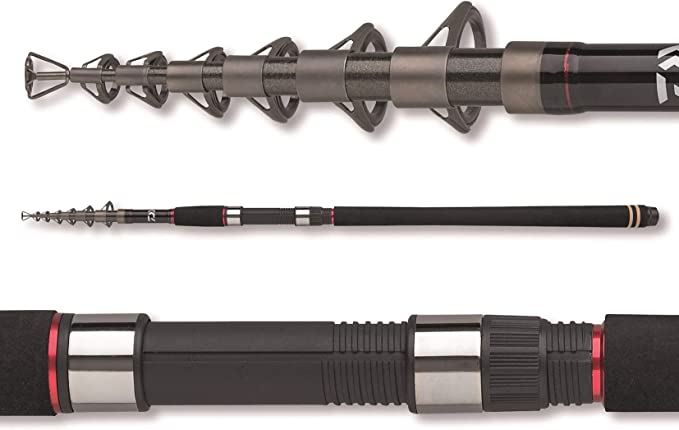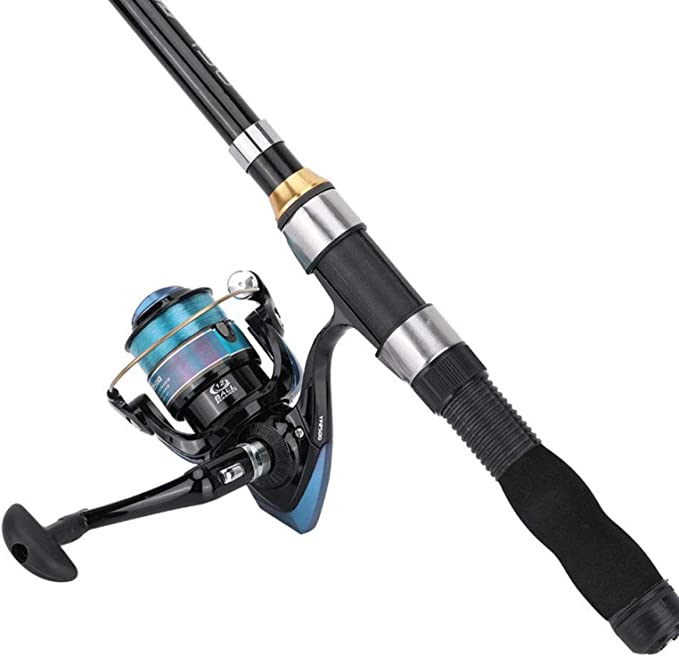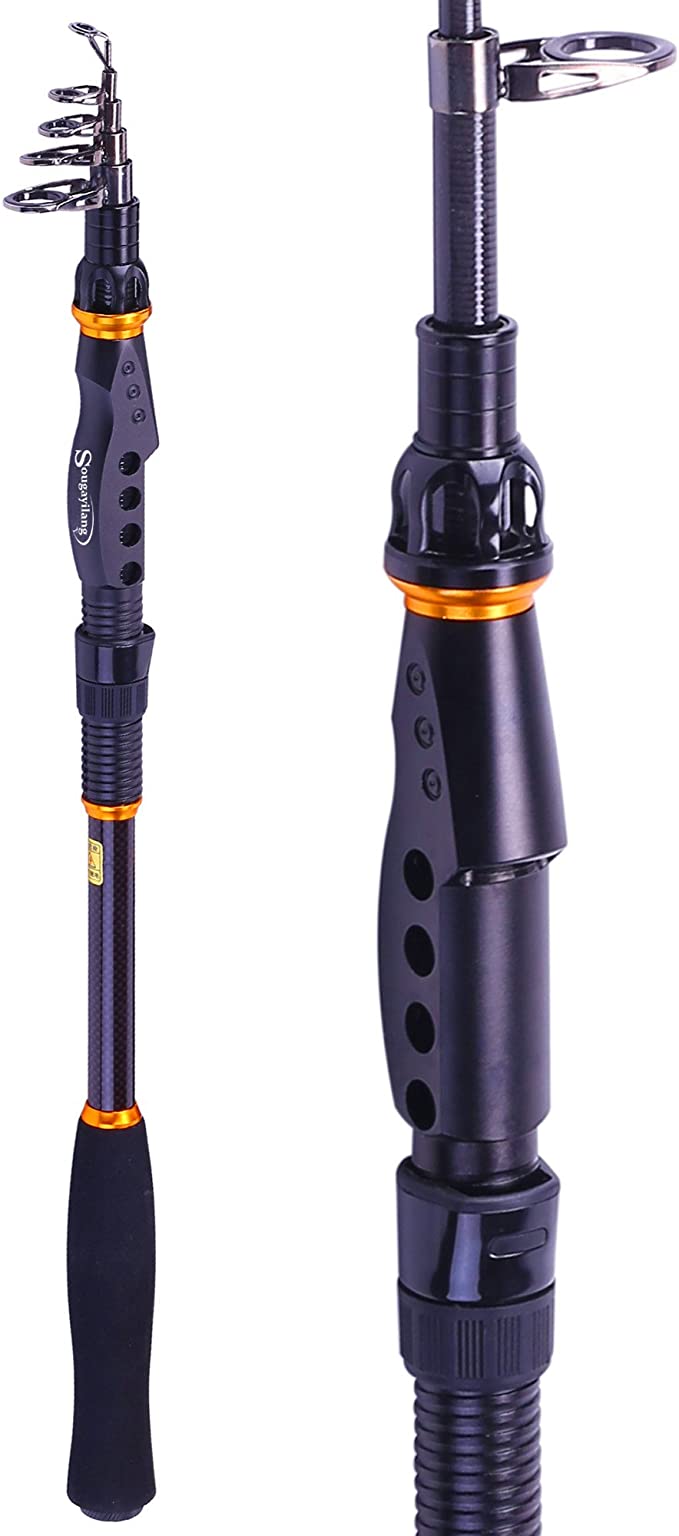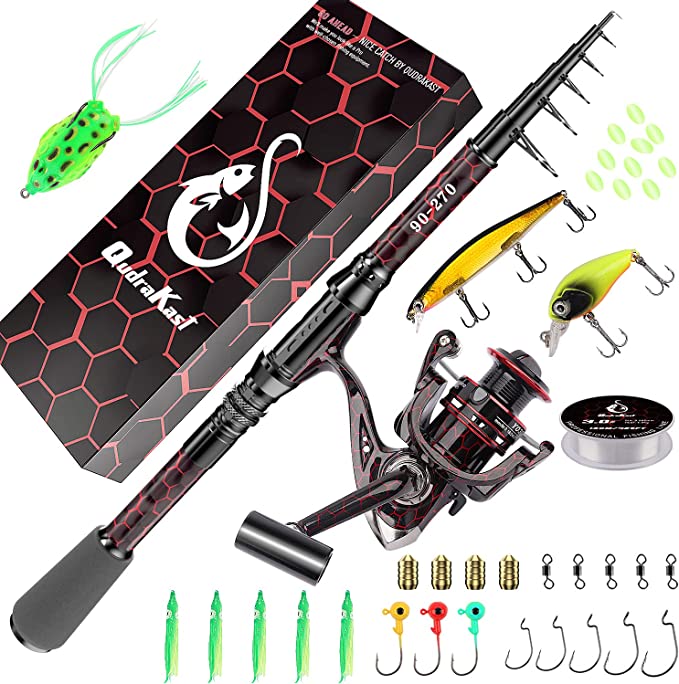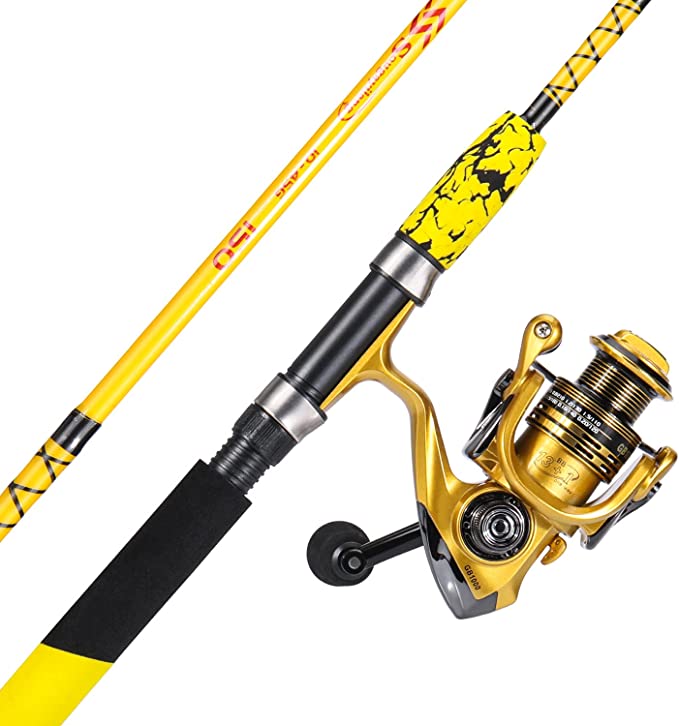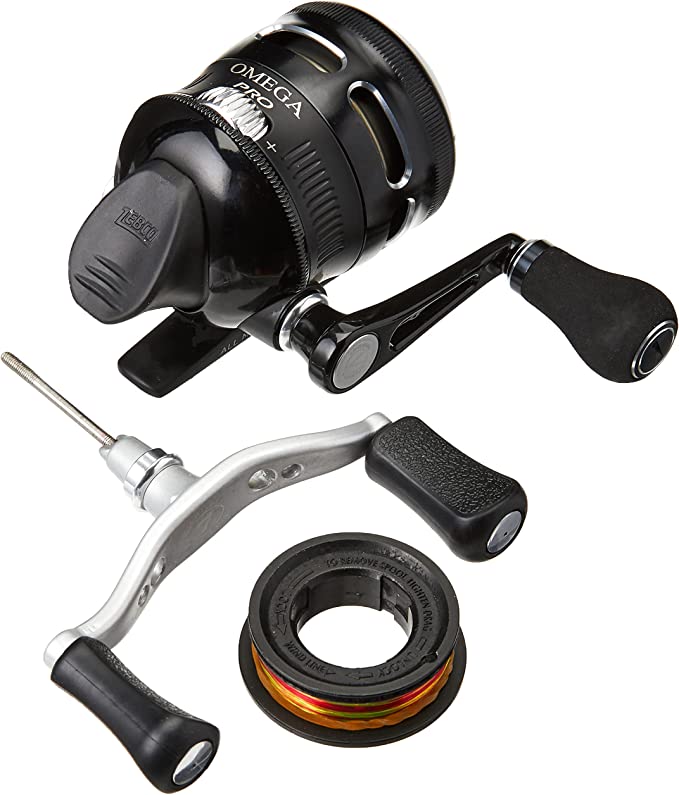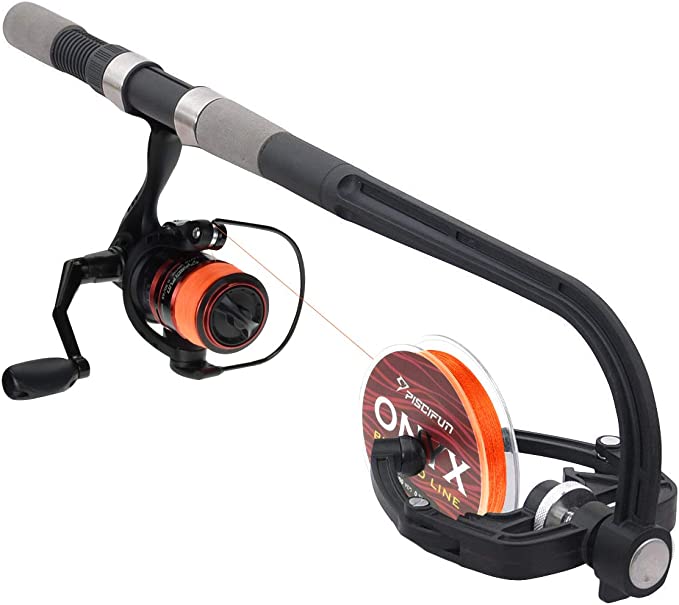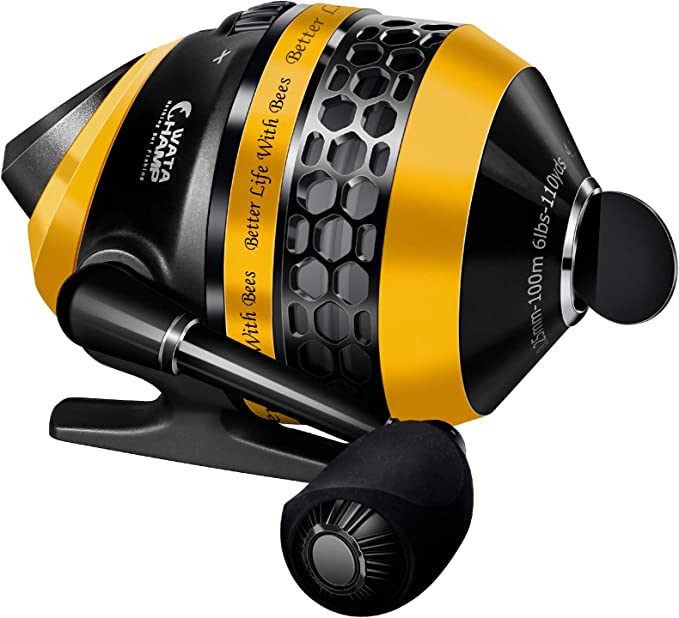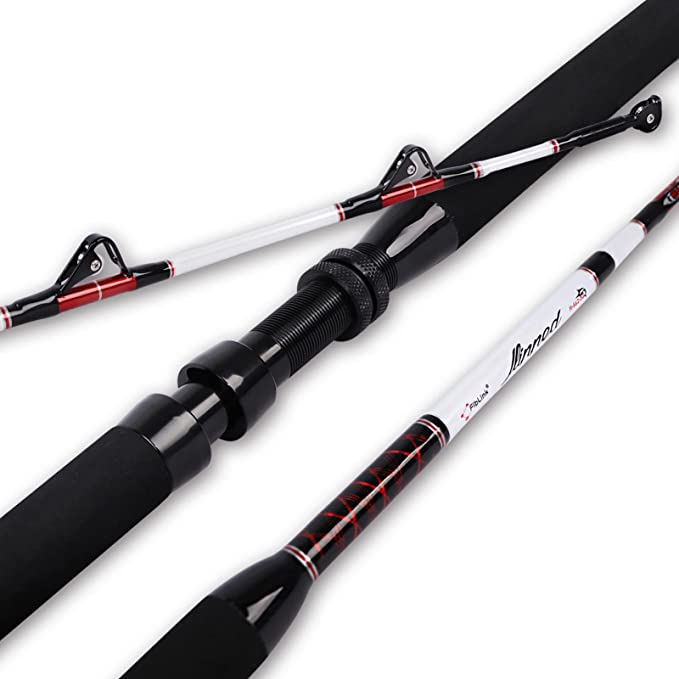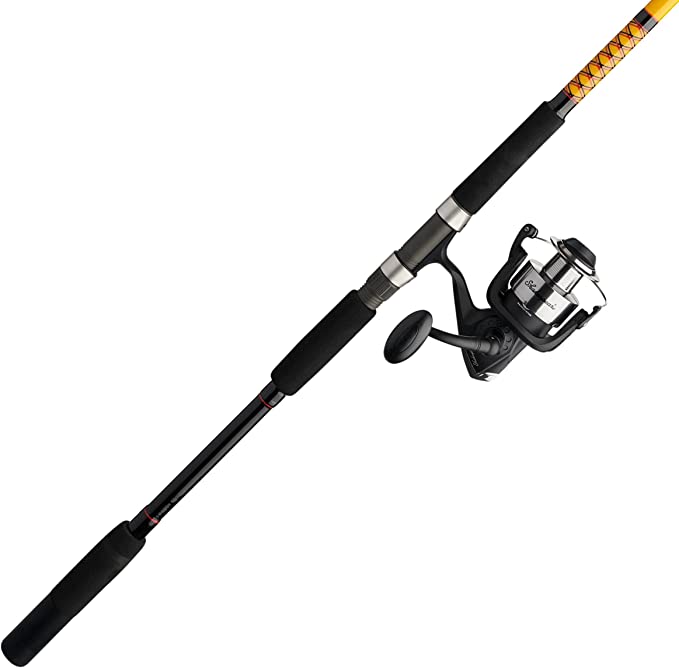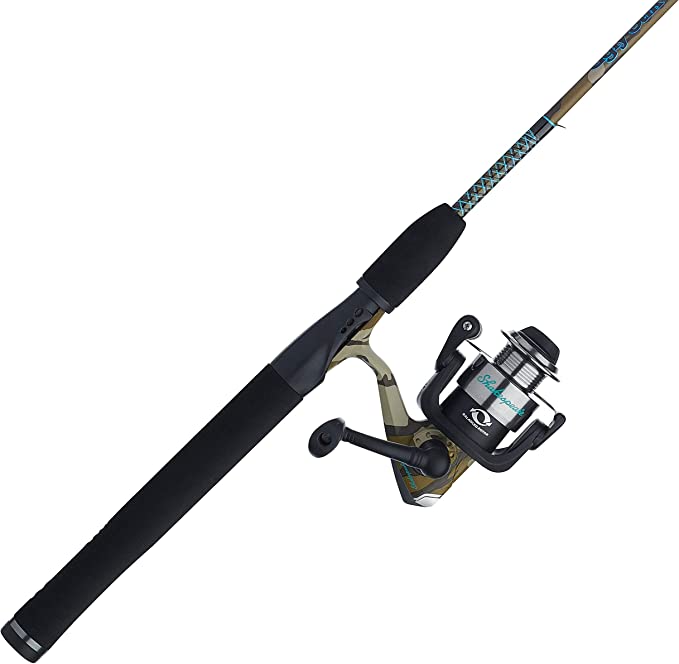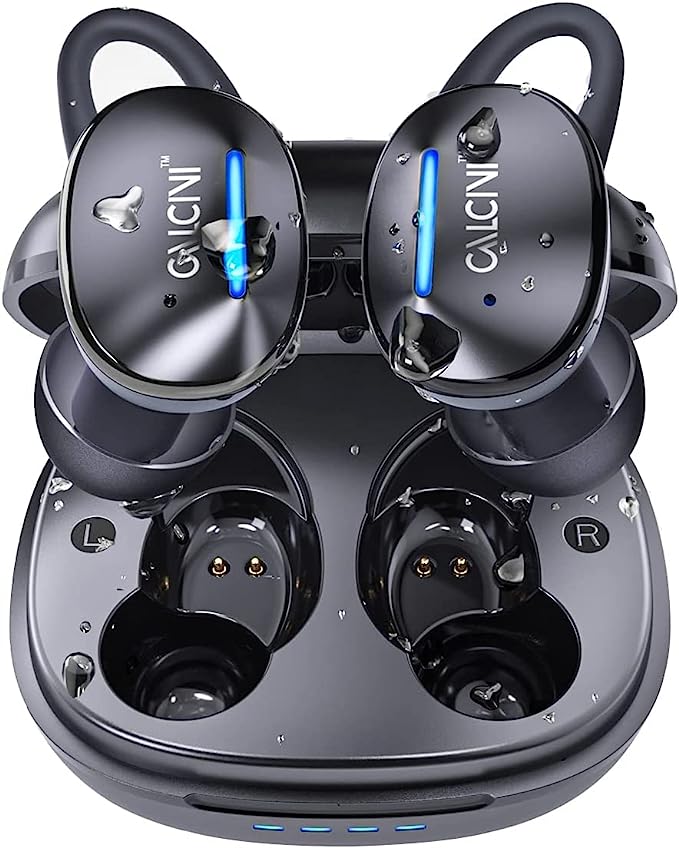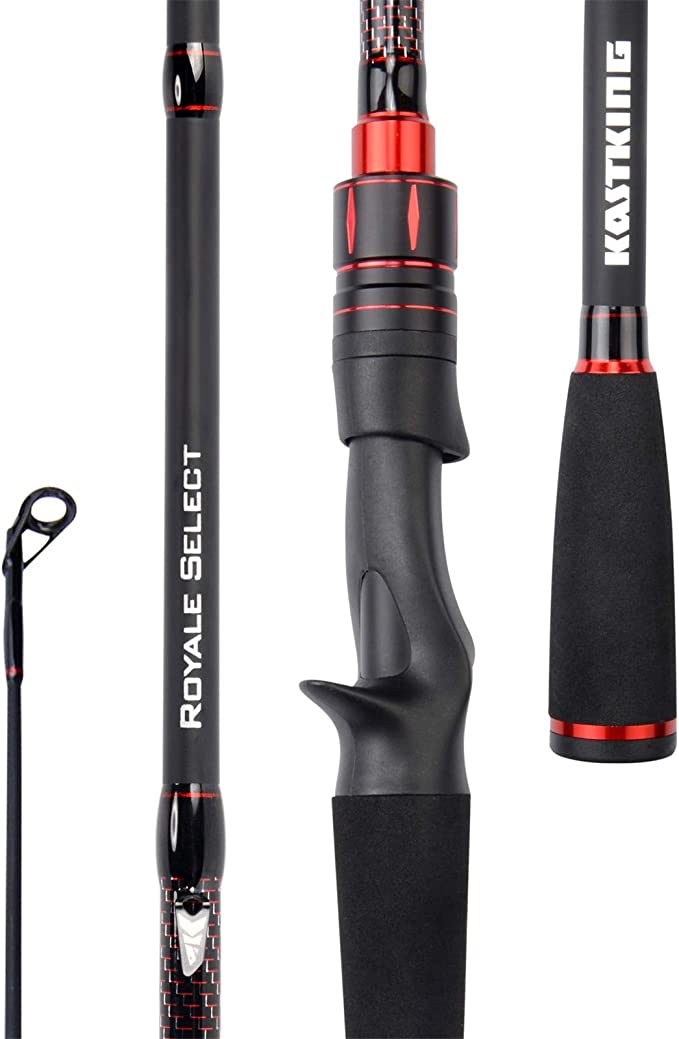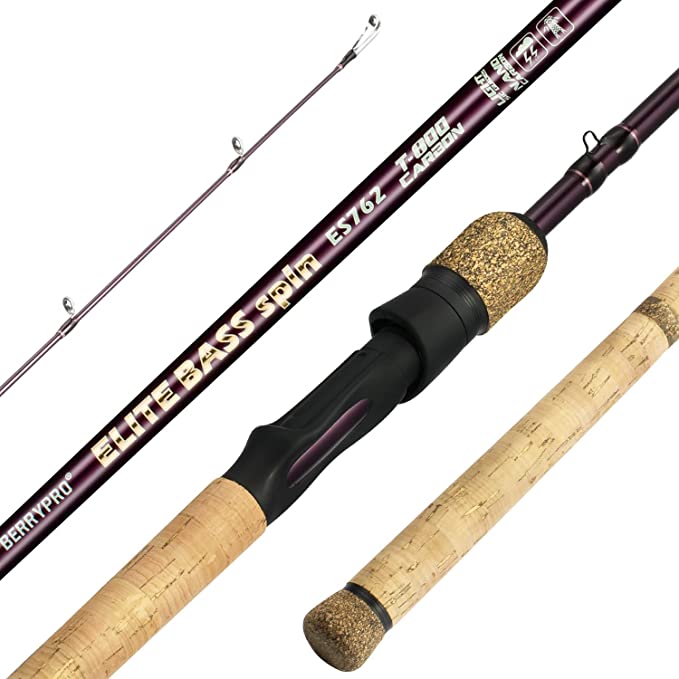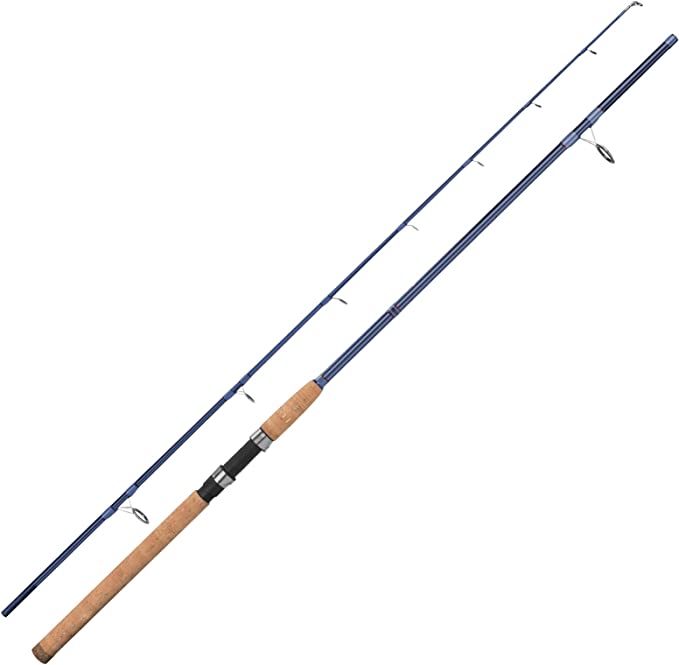Richcat Fishing Rod and Reel Combo: Your Versatile Companion for Telescopic Fishing Adventures
Update on Feb. 13, 2025, 6:13 a.m.
The Allure of the Cast
The rhythmic swish of a line, the anticipation as the lure dances on the water, the sudden jolt of a strike – fishing is more than just a pastime; it’s a connection with nature, a test of skill, and a source of profound relaxation. But like any pursuit, having the right tools can dramatically enhance the experience. And in the world of angling, the fishing rod is paramount. It’s the extension of your arm, the translator of subtle underwater movements, and the crucial link between you and your quarry. For the modern angler, especially those who value portability and versatility, the telescopic fishing rod has emerged as a game-changer.

Yesterday’s Fishing Rods vs. Today’s Innovations
The history of the fishing rod is a fascinating journey of ingenuity. From simple bamboo poles used centuries ago to the high-tech composite rods of today, the evolution reflects our constant quest for better performance and greater convenience. Ancient Egyptians used rods made of reeds, while the Chinese crafted rods from carefully selected and treated bamboo. These natural materials, while readily available, had limitations in terms of strength, consistency, and durability.
The 19th and 20th centuries saw the introduction of new materials like split cane, steel, and eventually, fiberglass. Fiberglass, developed in the mid-20th century, revolutionized rod making. It was strong, flexible, and relatively inexpensive, making fishing more accessible to the masses. But the real breakthrough came with the advent of carbon fiber.
Material Matters: The Science of Strength and Sensitivity
Carbon fiber, also known as graphite fiber, is a marvel of modern materials science. It’s created by heating precursor materials, typically polyacrylonitrile (PAN), to extremely high temperatures in a process called pyrolysis. This process removes non-carbon atoms, leaving behind long, tightly interlocked chains of carbon atoms. These chains are then aligned and embedded in a resin matrix to form the carbon fiber sheets used in rod construction.
The result is a material that is incredibly strong and stiff for its weight. This stiffness translates to sensitivity – the ability to feel even the slightest nibble on your line. However, carbon fiber’s inherent brittleness can be a drawback. A sharp impact can cause it to shatter.
This is where fiberglass comes in. While not as stiff or light as carbon fiber, fiberglass boasts exceptional flexibility and toughness. It can bend significantly without breaking, making it ideal for absorbing the shock of a fighting fish. Think of it like this: carbon fiber is like a strong, rigid steel beam, while fiberglass is like a resilient, flexible spring.
The Richcat Fishing Rod and Reel Combo, and many other modern telescopic rods, cleverly utilizes a composite construction, blending both carbon fiber and fiberglass. This approach harnesses the strengths of both materials: the carbon fiber provides the backbone and sensitivity, while the fiberglass adds the crucial element of durability and impact resistance. The precise ratio of these materials in the composite can be varied to fine-tune the rod’s action and power. The metal components, typically found in the reel seat and guides, provide additional strength and, importantly, corrosion resistance, crucial for saltwater applications.

The Telescoping Secret: Engineering Convenience
The defining feature of a telescopic rod, of course, is its ability to collapse down to a fraction of its extended length. This is a game-changer for anglers on the move – whether it’s backpacking to a remote lake, hopping on a plane for a fishing vacation, or simply storing the rod in a compact space.
The magic lies in the series of hollow sections, each slightly smaller in diameter than the one before it, that fit snugly inside one another. When extended, each section needs to lock securely in place to provide the necessary strength and rigidity for casting and fighting fish. There are primarily two common locking mechanisms:
- Friction Locks: These rely on the tight fit and friction between the sections to hold them in place. A slight taper on each section creates a wedge effect when extended. While simple, friction locks can be susceptible to slippage, especially if wet or dirty. * (Note: This is a likely mechanism for the Richcat, but needs confirmation.)*
- Twist Locks: These incorporate a mechanism, often a collar or a series of grooves, that allows each section to be twisted and locked into place. Twist locks generally provide a more secure connection than friction locks. * (Note: This is an alternative mechanism; confirmation needed for the Richcat.)*
The specific type of locking mechanism employed by the Richcat rod would need to be confirmed from the product’s detailed specifications. Regardless of the specific mechanism, the goal is the same: to create a secure and reliable connection that allows the rod to function as a single, solid unit when extended.
Beyond the Rod: The Reel’s Role
While the rod is the star of the show, the reel is its essential partner. The Richcat combo includes a spinning reel, a versatile and user-friendly type of reel that’s particularly well-suited for beginners.
Spinning reels have a fixed spool, and the line is wound onto the spool by a rotating bail arm. They are known for their ease of casting, especially with lighter lures, and their ability to handle a wide range of line weights. The 22lb test line pre-spooled on the Richcat reel suggests its suitability for targeting medium-sized fish in both freshwater and saltwater environments.
Putting it to the Test: Real-World Applications
The beauty of the Richcat telescopic rod, and similar designs, lies in its versatility. Let’s explore some scenarios where its features shine:
- The Traveling Angler: Imagine you’re hiking to a pristine mountain lake, your backpack already laden with gear. A bulky, conventional fishing rod would be a major encumbrance. The Richcat, collapsed down to a compact size, easily fits inside or straps onto your pack, leaving you free to enjoy the journey.
- The Urban Angler: Living in a city doesn’t mean you have to give up fishing. With a telescopic rod, you can easily transport your gear on public transport or store it in a small apartment without sacrificing valuable space.
- The Saltwater Adventurer: The corrosion-resistant materials used in the Richcat combo make it suitable for saltwater fishing. Whether you’re casting from a pier, wading in the shallows, or fishing from a kayak, you can be confident that your gear will withstand the harsh marine environment. (Note: Always rinse your gear with fresh water after saltwater use).
- The Freshwater Enthusiast: From targeting bass in a local pond to pursuing trout in a clear stream, the Richcat combo’s medium-heavy action and 22lb line provide the versatility to handle a variety of freshwater species.
- The Beginner Angler: The pre-spooled reel and easy-to-use design make it a great option for those new to fishing, removeing the issue of learning how to string up a reel.

Caring for Your Gear: Extending the Life of Your Rod
Like any piece of equipment, proper care and maintenance will significantly extend the life of your telescopic fishing rod. Here are a few essential tips:
- Rinse After Use: After each fishing trip, especially in saltwater, rinse your rod and reel thoroughly with fresh water to remove salt, sand, and other debris.
- Dry Completely: Before collapsing and storing your rod, make sure it’s completely dry. Moisture trapped inside the sections can lead to corrosion or mildew.
- Inspect Regularly: Check the guides for any signs of damage or corrosion. Damaged guides can fray your line, leading to lost fish.
- Lubricate the Reel: Periodically lubricate the reel according to the manufacturer’s instructions. This will ensure smooth operation and prevent premature wear.
- Store Properly: Store your rod in a cool, dry place, away from direct sunlight and extreme temperatures. A rod case or sleeve can provide added protection.
- Handle with care: While made of a durable blend of materials, avoid any unessary stress of the rod to prevent accidental cracking or breakage.
The Future of Fishing: What Lies Ahead?
The evolution of fishing rods is far from over. Researchers and manufacturers are constantly exploring new materials, designs, and technologies to enhance performance, convenience, and even the sustainability of fishing gear.
- Smart Rods: Imagine a fishing rod that can sense water temperature, depth, and even the presence of fish. This is the promise of “smart” fishing rods, which incorporate sensors and microprocessors to provide anglers with real-time data.
- Nanomaterials: Nanotechnology is opening up exciting possibilities for creating even lighter, stronger, and more sensitive fishing rods. Carbon nanotubes, for example, are incredibly strong and lightweight, and could revolutionize rod construction in the future.
- Sustainable Materials: As environmental awareness grows, there’s increasing interest in using sustainable materials in fishing gear. This includes exploring alternatives to traditional resins and developing biodegradable fishing lines.
The Richcat Fishing Rod and Reel Combo represents a significant step in the ongoing evolution of fishing gear. It’s a testament to how innovation can enhance even the most traditional of pastimes, making it more accessible, enjoyable, and adaptable to the needs of the modern angler. By understanding the science behind its design and materials, we can appreciate not only its functionality but also the ingenuity that makes it possible.
